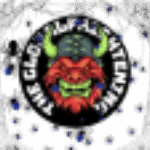Ok, I thought that I was done with writing about A.I. image generators. But, like Deckard from “Blade Runner” (1982) – a character who has gone from “He’s actually the film’s villain!” to “Hmm… He has become an amusingly edgy metaphor in this A.I. age” – it seems like I’m never done with the tech industry’s simulated versions of humanity.
Seriously, as forward-thinking as “Blade Runner” (1982) was, the modern obsession with A.I. has really ruined the whole “The replicants are the sympathetic characters” element of that film these days. And A.I. ruining an intelligent, complex work of human creativity – something with a ridiculous level of attention-to-detail (Yes, even in the “imperfect” original 1982 version), thematic depth and uniqueness – is the perfect segue into what I’ll be talking about today.
Back in late March and early April this year, there was an internet trend of people posting A.I. images in the style of Studio Ghibli movies. This Forbes article from late March explains it better, but a new version of a popular generator released at the time was able to create these sorts of images with a surprising level of “accuracy”, and it became an internet trend for a while.
And, even though I’ve only watched two Ghibli movies – “Spirited Away” (2001) and “Howl’s Moving Castle” (2004) – I understand why this trend appealed to people online. It’s laugh-out-loud funny to see frames from gritty, morally-ambiguous gangster movies like “The Godfather” (1972), “Scarface” (1983) and “Pulp Fiction” (1994) turned into innocent-looking Ghibli-style images. This is genuinely funny – and possibly even qualifies as parody – but I still have to criticise this A.I. trend.
Surprisingly, I won’t be criticising it from the perspective of copyright or even bringing up that famous old clip of Hayao Miyazaki talking about how machine-generated “creativity” is ” […] an insult to life itself“. I don’t need to.
The main reason I have to criticise the Ghibli-style A.I. trend is because of how superficial it is.
Whilst the art style is a recognisable part of Studio Ghibli films, it isn’t why most people watch them. These films are famous because of their ridiculously detailed animation work, because of their nuanced writing, because of their carefully-crafted atmosphere, because many – but, notoriously, not all – of them have a reputation as being “feel-good” films which aren’t Disney-saccharine etc… Even in translation, these films have major worldwide popularity because of the sheer amount of thought that has gone into making them.
And, for all of its flashy technical achievements, A.I. cannot think like a human. A lot of more traditional errors with A.I. images happen because the machine can’t understand how different parts of an image relate to each other, in the way that a human instinctively would. Or because the A.I. cannot have direct experience of things like the laws of physics. Yes, the tech companies might have gotten it to make realistic hands and readable text these days, but the underlying fact is that – having never actually experienced being human – an A.I. will make mistakes that a human wouldn’t.
Nowhere is this more obvious than the Ghibli-style A.I. trend earlier this year. Yes, the A.I. can perfectly copy the surface-level “look” of these films. It can adapt this visual style to pretty much anything you ask it to. But that is as far as it goes. Just a visual style. It cannot write a film script with the complexity and emotional nuance of an actual Ghibli film script – because it has never experienced emotions. It can never create the sort of hyper-detailed realistic animation that Ghibli can – because that requires understanding how everything in the real world works from direct experience, keeping track of numerous details and stuff like that.
An A.I. might be able to make an image that looks like a Studio Ghibli film, but it will never be able to make an actual Studio Ghibli film. Because real human creativity not only requires actual direct experience of being a human, but it also involves thousands or millions of small deliberate decisions which require actual thought. Everything in a Studio Ghibli film is the result of a writer, director, artist, animator, musician, voice-actor etc… actually thinking about something and then making a decision. Making lots of deliberate decisions – what to draw in one part of the background, what a character should say, how they should say it etc… – which all add up to a cohesive and coherent creative work.
And A.I. cannot do this. It might be an impressive technical achievement, or a fun toy or whatever but the “Let’s make everything look like Studio Ghibli” trend from earlier this year shows why real human creativity will always be better than it. Because, yes, an A.I. can make something look like something else. But that’s about all it can do.
In other words, Studio Ghibli films are made by humans for humans. This is why they are so famous. Again, it isn’t the art style that made these films famous, it’s the stories and the detailed realistic animations, and the whimsical atmosphere and the mood they evoke in people. Whilst these films are commercially-successful, they aren’t just generic blockbuster films. There’s actual thought and imagination and “human only” stuff like that behind them, which even the most advanced A.I. could never hope to replicate.
So, yes, the “Ghibli” A.I. trend earlier this year was goofy and silly and funny and everything, but it wasn’t the “win” that A.I. supporters thought that it was. It just showed how superficial and limited the technology will always be, because of what it is (or, more accurately, what it isn’t).
————–
Anyway, I hope that this was interesting 🙂





